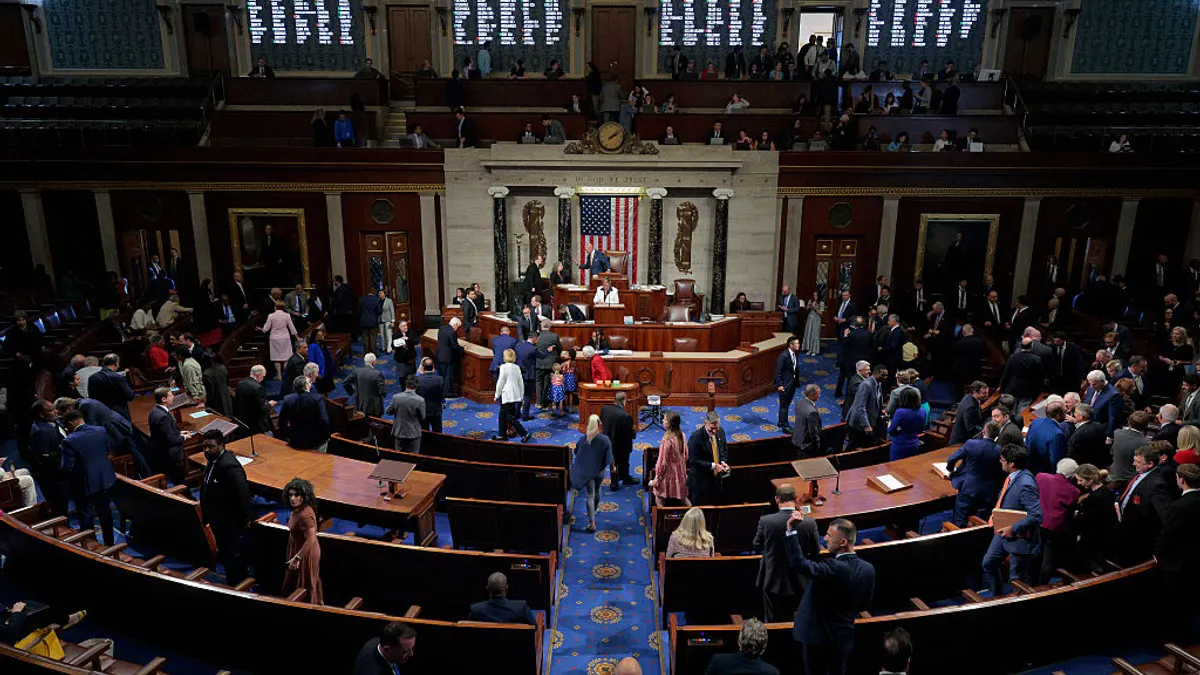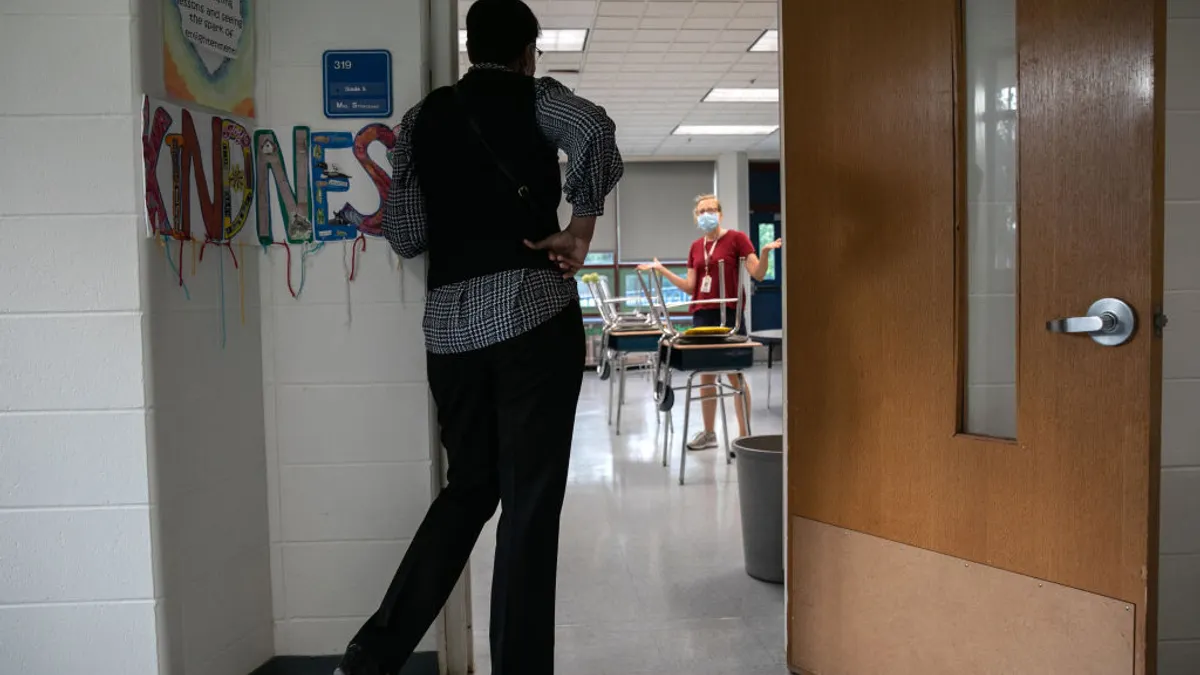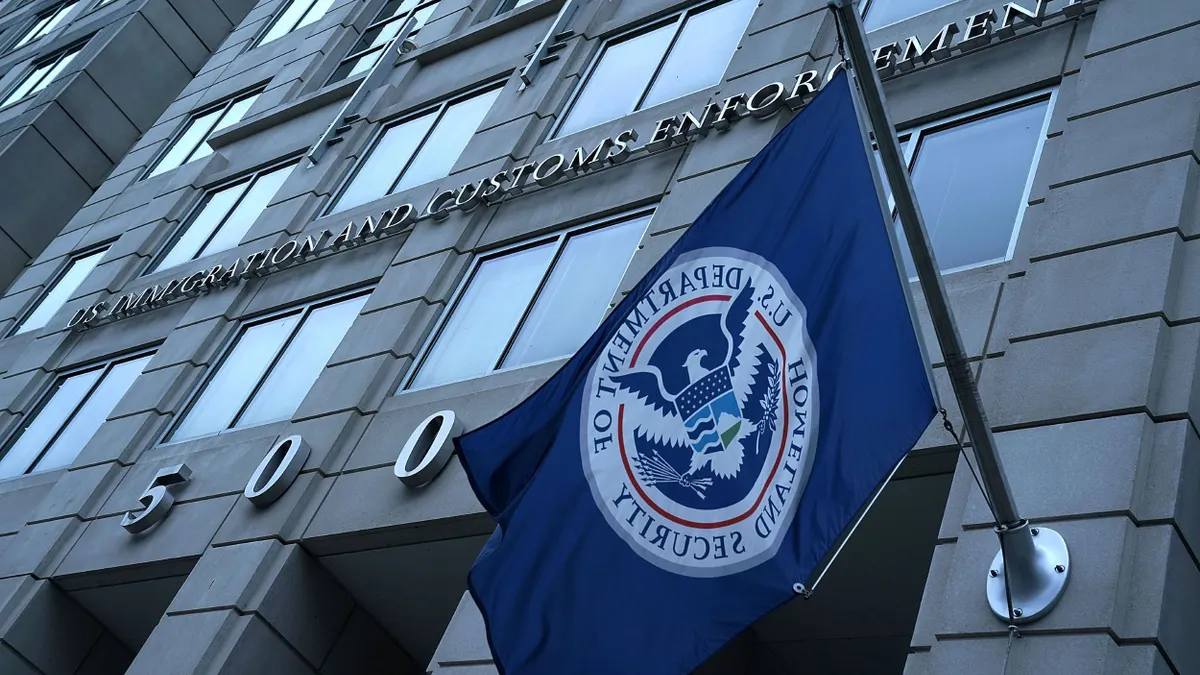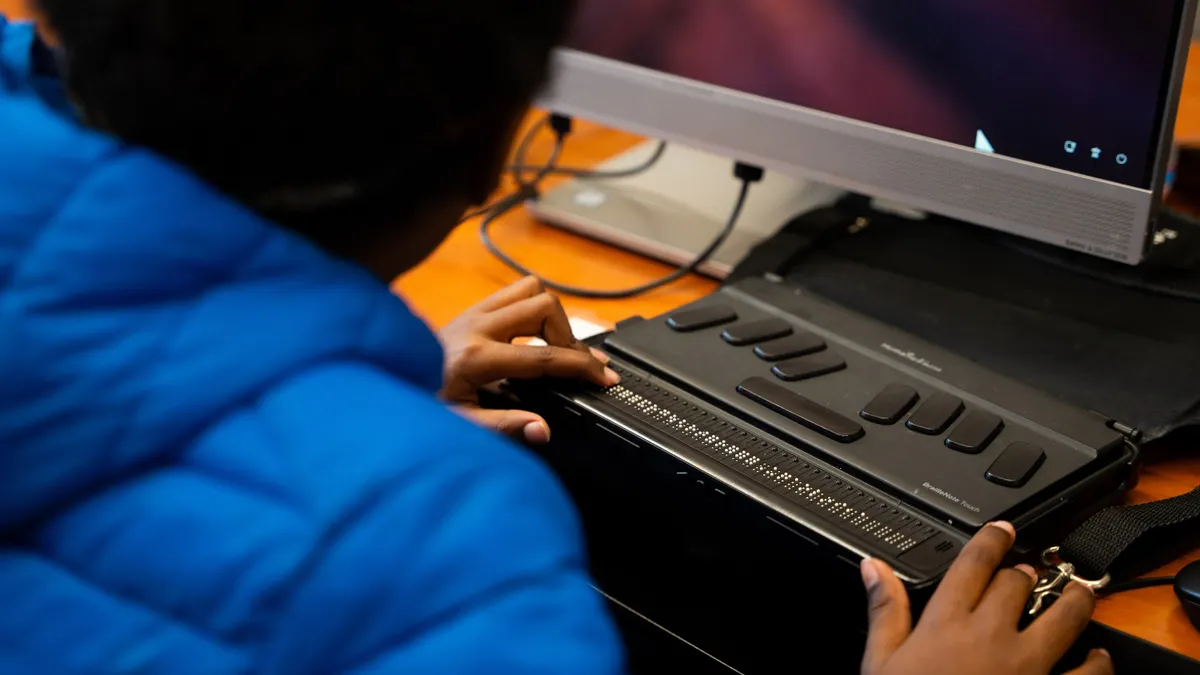The House Appropriations Committee, after a day-long debate, advanced a bill Tuesday that would reduce federal Title I funding for low-income schools by 26% and cut the overall U.S. Department of Education budget by 15% to $67 billion for fiscal year 2026.
The budget plan aligns closely with President Donald Trump's proposal, but veers sharply from the bipartisan plan agreed to by the Senate Appropriations Committee in July. The Senate plan recommends funding the Education Department in FY 26 at $79 billion, or an increase of about $300 million from the current spending level.
The House and Senate will now need to separately debate their bills and, once approved, work to reconcile the two proposals before the start of FY 2026 on Oct. 1.
Neither the House or Senate proposals include a recommendation by Trump to consolidate current competitive educational formula funding grant programs into a single formula grant program, or block grant. Opponents said consolidating certain education grants diminishes accountability measures, but supporters say it would give states more flexibility to spend funds as they see best.
During the Tuesday markup, members of the committee also considered spending plans for the departments of Labor, Health and Human Services and related agencies. Along with the education portion, the Republican-led spending bill for the various agencies was approved along party lines, 35-28.
Rep. Robert Aderholt, R-Ala., chair of the House Labor, Health and Human Services, Education, and Related Agencies Appropriations Subcommittee, said the bill reflects "fiscal sanity" and rejects "federal funding from going toward enforcing gender identity politics."
In justifying the cuts to the Education Department, a House Appropriations Committee report on the bill points to disappointing test score results despite increased federal funding over the years. "Federal tax dollars have not been shown to result in meaningful improvement in student achievement," the report said.
National Assessment for Educational Progress test results released Tuesday show average 12th grade math and reading scores each had a 3-point decrease compared to 2019.
During Tuesday's markup, Democrats unsuccessfully tried to prevent cuts to Title I funding. A Republican-led measure to block funding for mandatory active shooter drills unless parents are given an opt-out for students under 16 was agreed to by voice vote.
Rep. Rosa DeLauro, D-Conn, ranking member of the House Appropriations Committee, said the education spending bill is an "assault on education." She said the Title I cuts will remove at least 72,000 teachers out of classrooms in low-income communities.
In a letter sent to House appropriations leaders Monday, AASA, The School Superintendents Association, urged the lawmakers to reject the House proposal. Even though the proposal gives slight increases to special education, career and technical education, and student academic achievement activities, those amounts "are negligible compared to the magnitude of reductions elsewhere," AASA said.
"This proposal provides less funding per pupil for this year’s graduating class — the 2026 seniors — than it provided when they were in kindergarten," the letter, signed by AASA's Senior Government Affairs Manager Tara Thomas, said. Thomas added, "This shortsighted proposal compromises the future of our nation by jeopardizing the education of our next generation"
Congress is considering the next fiscal year spending plan at the same time many education organizations, researchers and advocates are voicing alarm about federal pullback in public education.
This summer, the White House's Office of Management and Budget delayed by weeks the release of more than $6 billion in grants for student academic supports, after-school programming, English learners, immigrant students and teacher training. And earlier this year, the Education Department laid off half its staff, although some positions are being reinstated.
Trump, in April, signed an executive order to direct the education secretary to begin winding down operations within the Education Department.
Additionally, school systems are adjusting to the end of federal COVID-19 emergency aid and financial pressures due to decreased enrollment due to expanding school choice options and declining birth rates. In July, Congress passed the "One Big, Beautiful Bill" that included the first federally funded private school choice program to be offered nationwide.
In responding to the disappointing NAEP scores released Tuesday, U.S. Education Secretary Linda McMahon said in a statement, "Success isn’t about how much money we spend, but who controls the money and where that money is invested. That’s why President Trump and I are committed to returning control of education to the states so they can innovate and meet each school and students’ unique needs."
Given the approaching Oct. 1 start of FY 2026, Sen. Patty Murray, D-Wash., called for bipartisan efforts to agree to a continuing resolution to temporarily fund the federal government at current levels if Congress cannot finalize a new budget.
"So, there is a tried and true off-ramp Republicans can take to avoid a shutdown: Work with us on bills that actually help people," Murray said during a press conference Tuesday.




















